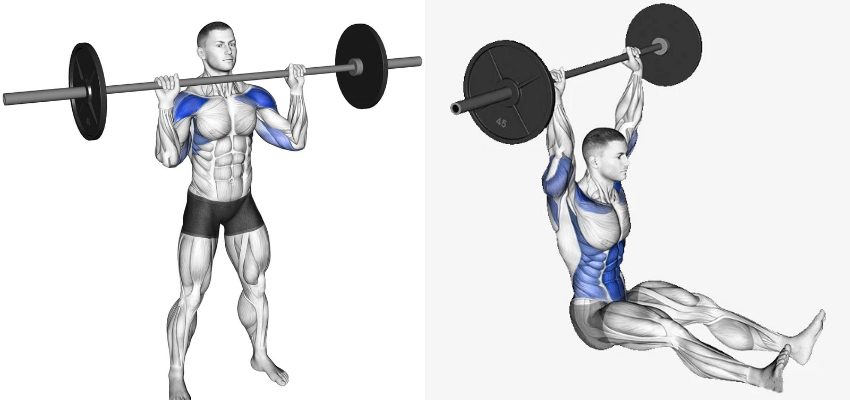The first time I searched for a barbell strict press variations, I honestly had no clue what I was looking for. I just knew my overhead press had stalled, and doing the same old thing wasn’t cutting it anymore.
At first, I thought pressing was simple. Pick the bar up, push it over your head, repeat. But man—once you hit a wall, you realize how much goes into it. Shoulder strength, core control, bar path, lockout… it’s a lot.
So I started playing with different variations. Some were trash. Some wrecked my joints. But a few? They actually helped me feel stronger, more stable, and made strict pressing feel good again.
What Even Counts as a Barbell Strict Press and Variation?
So first—what is a barbell strict press?
It’s pretty much the cleanest, no-cheat way to press a bar overhead. You’re standing, feet planted, no leg drive, no bouncing. Just upper body strength. Shoulders, triceps, and core have to do all the work.
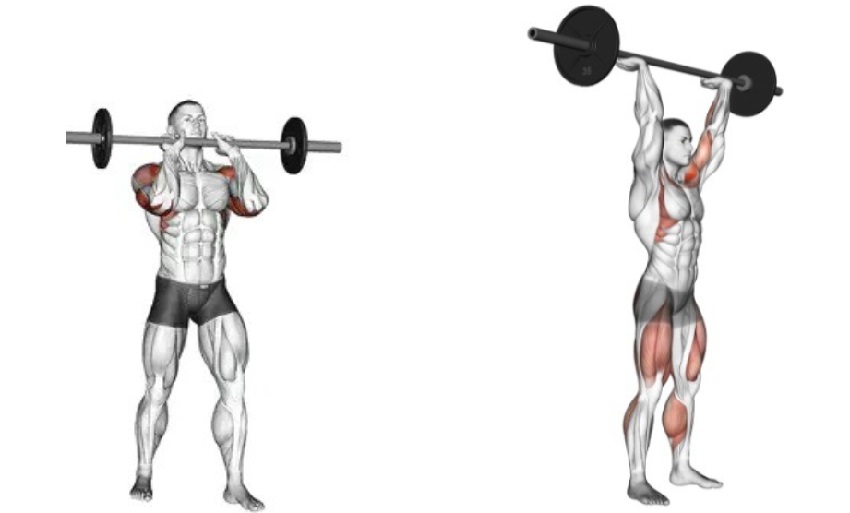
Primary Muscles Worked
- Deltoids (Shoulders)
- Triceps Brachii
- Upper Pecs (Clavicular chest fibers)
Secondary (Stabilizer) Muscles
- Trapezius (Traps)
- Core (Abs + Obliques)
- Spinal Erectors
That’s why strict pressing gets tough fast—it’s all you. No legs, no momentum, just raw pressing strength.
I used to think anything overhead counted. But after messing around with a bunch of presses, I realized not all of them hit the same.
When I say barbell strict press variation, I’m talking about stuff that sticks close to that original strict vibe. So yeah—standing presses, barbell-focused, no momentum from the legs. No dumbbells, no kettlebells, no machines.
That ruled out a lot. But here are the 5 variations I stuck with and actually liked:
- Conventional Shoulder Press – The OG strict press.
- Landmine Press – Slight angle, less joint stress, sneaky good for shoulders.
- Overhead Pin Press – Pure lockout strength. No momentum.
- Push Press – Okay, this one does use leg drive—but I’ll explain why I kept it in.
- Z Press – Brutal core test. You’ll feel everything working.
Up to the present time, each one hits different. And depending on where I’m stuck—lockout, stability, bar path—I’ll cycle one of these in.
My Go-To Barbell Strict Press Variations
These are the barbell strict press variations that actually earned a spot in my training. I picked them based on feel, how much they help my strict press, and how easy they are on my joints.
Conventional Shoulder Press (Standing Strict Press)
This one’s the classic. Just you, the bar, and gravity. Standing tall, no leg drive—pure upper body grind.
Muscles Worked:
- Front delts
- Triceps
- Upper chest
- Core (big time, especially when going heavy)
Why It’s a Go-To:
It’s the gold standard for strict pressing. If I want to measure real shoulder strength, this is the move. Plus, it carries over to literally every other press variation.
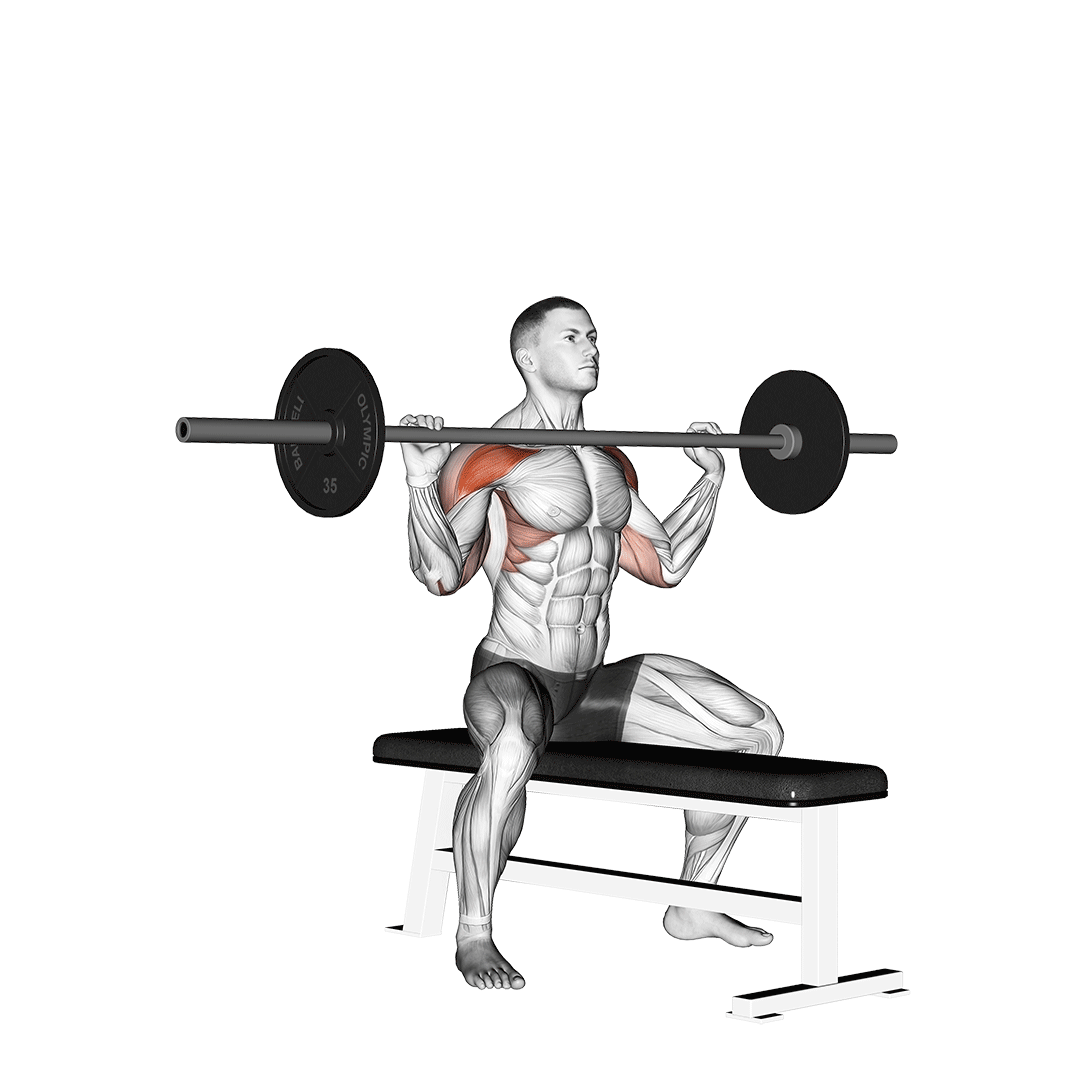
How I Do It:
- Feet shoulder-width(You can choose to sit on the bench.)
- Hands just outside shoulders
- Squeeze glutes and core
- Press straight up, bar stays close
- Head moves slightly back and through at the top
Landmine Press
This one saved my shoulders during a rough patch. The angled bar path is way more joint-friendly.
Muscles Worked:
- Front delts
- Upper chest
- Triceps
- Scapular stabilizers (bonus!)
Why It’s a Go-To:
Perfect when my joints feel beat up or I just want to press more without burning out. Also awesome for higher reps and clean control.
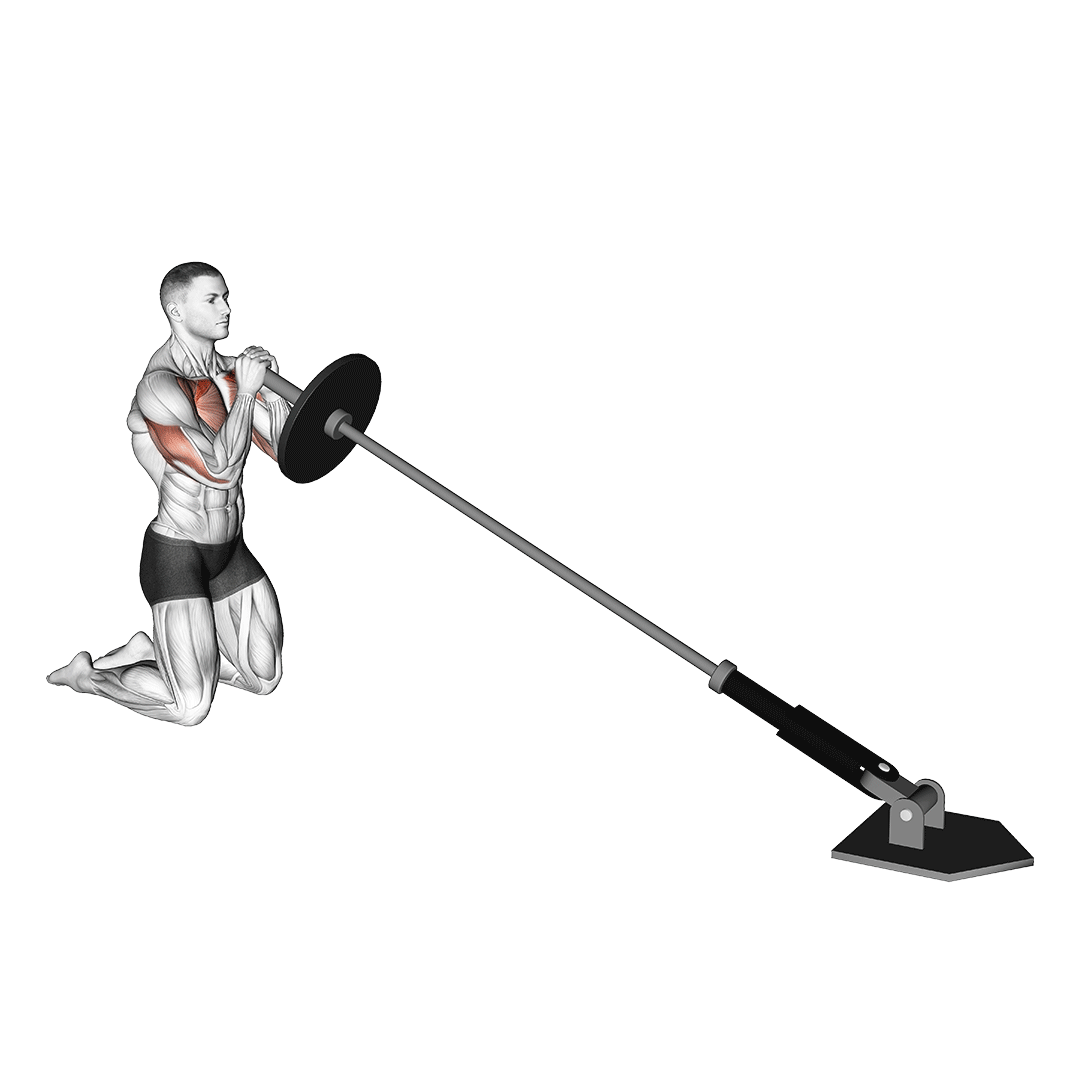
How I Do It:
- Wedge the bar in a corner or landmine attachment
- Grab the sleeve with one hand (or both)
- Press up and slightly forward
- Control the negative
Overhead Pin Press
This thing humbles you. You’re pressing from a dead stop at eye or forehead level—no momentum, no stretch reflex.
Muscles Worked:
- Triceps
- Front/mid delts
- Traps and upper back (stabilizers)
Why It’s a Go-To:
Great for building top-end strength. I add this when I start missing lifts near lockout. Helps with bar path awareness too.
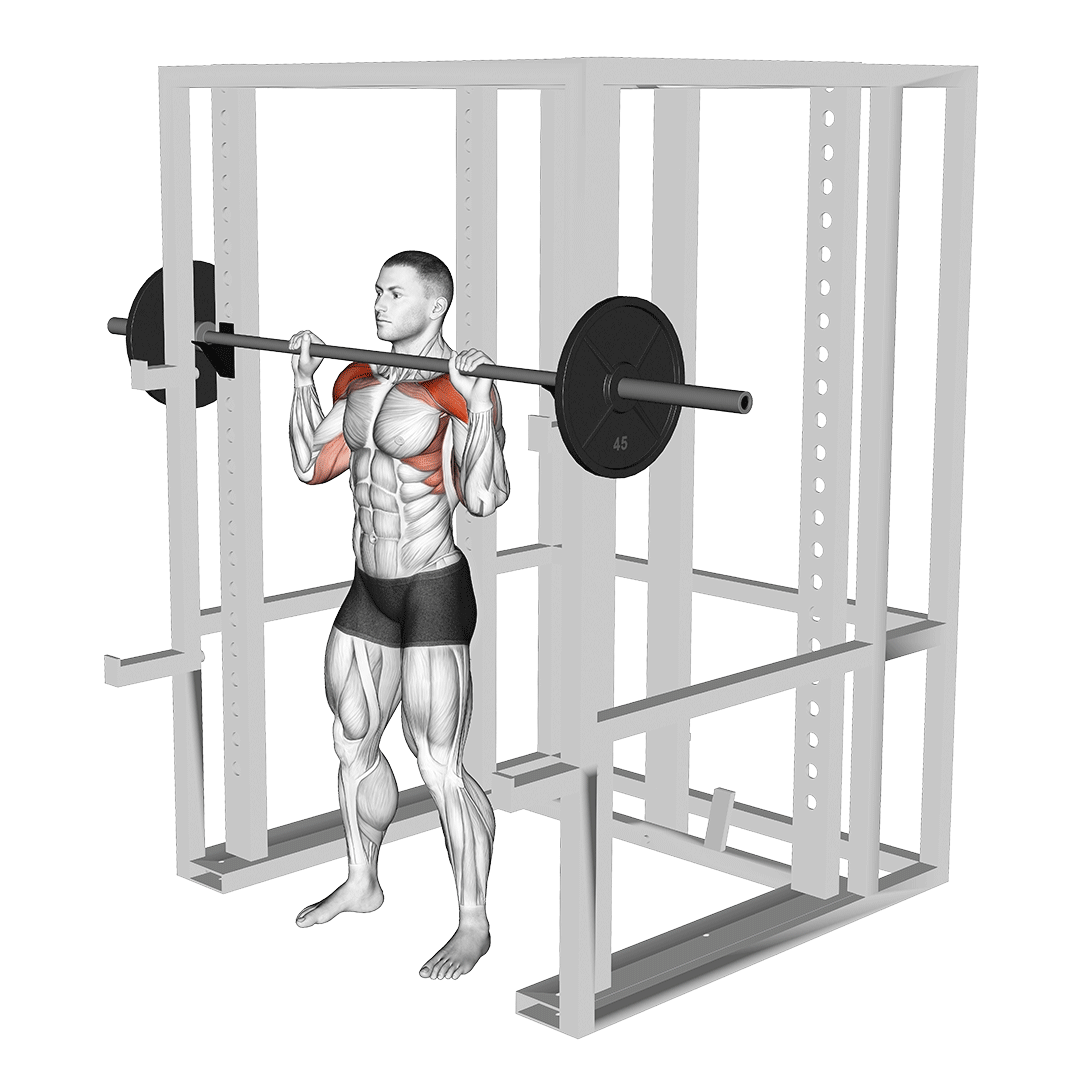
How I Do It:
- Set safety pins at forehead height
- Start under the bar (tight setup)
- Press straight up from dead stop
- Pause at the top, don’t slam it back down
Push Press
Yeah, this one breaks the “strict” rule—but it’s too useful to leave out.
Muscles Worked:
- Shoulders
- Triceps
- Quads, glutes (leg drive!)
- Core for control
Why It’s a Go-To:
Lets me handle heavier weight. I treat it like an overload tool — more weight than strict, but less stress than maxing out.

How I Do It:
- Dip quick and shallow
- Explode up with legs
- Catch the bar overhead with straight arms
- Keep it clean — don’t turn it into a sloppy jerk
Z Press
This is strict press on hard mode. Sitting on the floor with zero back support = brutal.
Muscles Worked:
- Shoulders
- Triceps
- Core (insane core demand)
- Hip flexors (stabilize your seated position)
Why It’s a Go-To:
Forces perfect posture and balance. You can’t lean back or cheat. I don’t go heavy here—just focus on clean reps and staying upright.
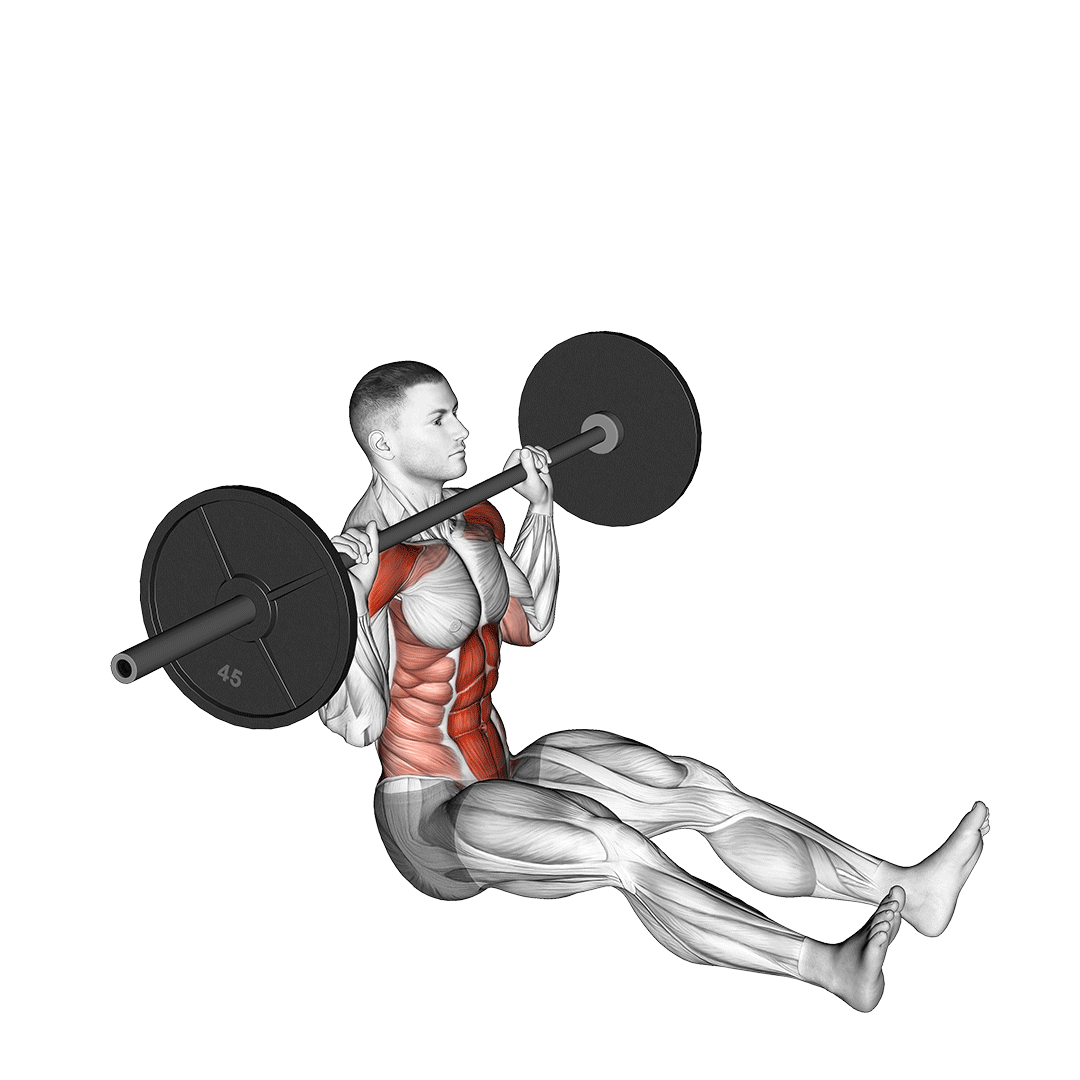
How I Do It:
- Sit on the floor, legs straight
- Bar at collarbone level
- Brace HARD
- Press up slow and controlled
- Don’t lean back — that’s the whole point
So Which One Should You Do?
- Honestly? Depends on your goals. If you want pure strength, stick with the strict press and maybe pin presses.
- If you’re nursing an injury or want something more joint-friendly, the landmine press is gold.
- For athleticism or overload? Push press.
- And for humbling your ego? The Z press will do the trick every time.
Each one of these barbell strict press variations has helped me break through sticking points or train around soreness. Try a couple and see what fits your body best.

Hi, I’m the editor here at Leadman Fitness. We’re a manufacturer focused on producing top-quality barbells, plates, kettlebells, dumbbells, and strength training gear. I’ve been into sports and fitness for years, and I know my way around all kinds of gym equipment—both from using it and helping create it.
I spend a lot of time understanding the real problems people run into in the gym—whether it’s beginners trying to pick the right gear or experienced lifters looking for something more durable. I stay in close touch with our production team and talk directly with other equipment makers, so we’re always improving based on what real lifters and coaches are looking for.
What I share comes from hands-on experience—stuff that actually helps people train better, not just in theory, but in real gyms.
